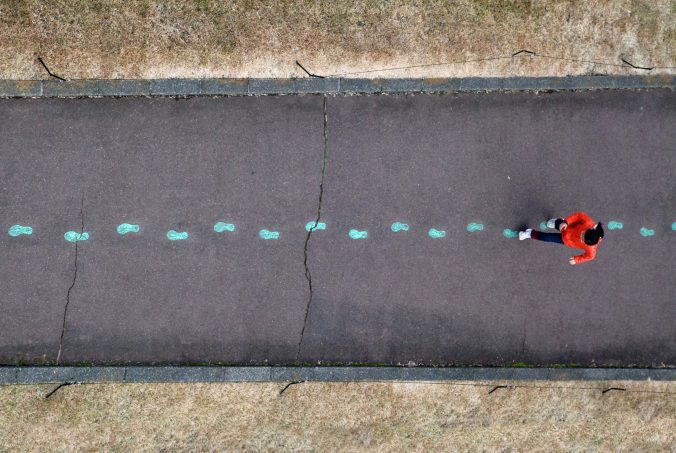1.Understanding(discovering, interpreting, explaining)
Definition:
Core: In the era of information overload, people easily become trapped in an “information bubble”—exposed only to content that aligns with or mirrors their existing views, passively resisting new information. Over time, this reinforces cognitive biases.
Objective:
I plan to create a concise, impactful comic that visually illustrates the formation, dangers, and simple methods to break free from the “echo chamber effect,” prompting viewers to reflect on their own habits. It will vividly show how prolonged existence within an information cocoon gradually erodes one’s capacity for independent thought and self-reflection.
Background:
This comic highlights how modern big data algorithms push content and videos based on personal preferences, rarely introducing novel perspectives. We must break through this invisible wall to broaden our horizons.
Target Audience:
Young adults, as they are the primary users of social media. They spend significantly more time on these platforms than others and are at a critical stage of worldview formation, making them most susceptible to big data algorithms.
Learning Objectives:
- Recognize the visual manifestations of echo chambers and reflect on the cognitive limitations and mental rigidity caused by information silos.
- Understand the consequences of prolonged confinement within information silos.
- Describe how algorithms reinforce existing viewpoints by continuously recommending similar content.
- Actively seek out and listen to diverse perspectives to break free from information silos and broaden horizons.

2.Plan(concept, sketch, details)
Format:
12-frame animation
Character: Daniel, a young social media user.
Final script
Act 1
Image: Through the window, a young man named “Daniel” is seen curled up on the sofa, intently scrolling through his phone, his expression relaxed.
Narrator: Every day, we construct our own mental worlds on social media.
Act 2
Image: Close-up of the phone. The screen displays a post he strongly agrees with. His thumbs-up is “like.”
Text (speech bubble): “That’s absolutely right!”
Act 3
Image: The phone screen scrolls down like a waterfall, revealing countless content and tags, all expressing similar viewpoints. These content begin to form around Daniel like bricks.
Narrator: Every like and share adds a brick to this world.
Act 4
Image: Daniel is surrounded by a wall of glowing screens and text. He looks content.
Narrator: Big data algorithms are helpful and, soon, establish a comfort zone.
Act 5
Image: The walls grow taller and taller until they close overhead, forming a glowing, enclosed “room” with Daniel sitting in the center.
Text on the label wall: “I think the same as you!” This is right! We’re all the same!”
Act 6
Image: Daniel is in a room, surrounded by icons of praise and approval (hearts, thumbs-up signs), but he’s starting to look bored.
Narrator: There’s only the sound of approval here.
Act 7
Image: A small window appears on the wall of the “room.” Outside, a small figure with a different design, holding a sign that says “Viewpoint B,” waves inward.
Text (Image outside the window): “Hey, if we look at this from a different perspective…”
Act 8
Image: Daniel’s face flashes with disgust. Suddenly, many hands emerge from the wall, holding signs that read “Block,” “Report,” and “Nonsense,” and quickly seal the window shut.
Text (Daniel): “Noise!”
Act 9
Image: Close-up of Daniel’s face. He looks around at the impenetrable walls, his expression gradually shifting from contentment to unease.
Text (Daniel’s thoughts): “Why… do I feel smaller?”
Act 10
Image: Daniel hesitantly reaches out his fingers and digs at the wall. Bricks (representing information labels) begin to loosen.
Narrator: So, he decides to open a window.
Act 11
Image: A beam of light, different from the light inside, streams in through the small hole he’s dug. Curiously, Daniel peers through the hole and sees other “viewpoint rooms” of various colors and shapes.
Narrator: The light filters in.
Act 12(Ending)
Image: Panorama. A beautiful, open window appears on the wall of Daniel’s “room.” He sits by it, calmly gazing at the vast and diverse world outside. The room still exists, but it’s no longer enclosed.
Text: Break out of the echo chamber and open a window for yourself.
Concept
Cognitive Load Theory: Comics use simple visual metaphors, such as the sealed walls of a room and the broken window at the end, to present complex concepts, reducing the cognitive load required to understand social phenomena.
Enhancing Memory: By presenting information through both visuals and language, the comic effectively deepens the viewer’s understanding of the comic.
Emotional Design: Following the comic protagonist’s perspective and witnessing his emotional transition from comfort to confusion and then peace, the viewer develops empathy and makes the message more impactful.
Contrast: The story creates a sharp contrast from the impenetrable walls that trap Daniel at the beginning to the opening of a window at the end.
Peer feedback
Based on the feedback I’ve received, my colleagues suggest incorporating more visual elements into the script and reducing the amount of text. Adding a visually engaging element to each paragraph could imply that data algorithms are presenting this information, helping readers understand the underlying technology. This approach would help readers delve deeper and break through the “invisible wall.”
For greater impact, colleagues suggest concluding with a direct reflective statement such as “What is that wall around us?” The balance of text and imagery should be refined in the final draft. Incorporating humor or satire into the narrative would make the message more memorable.
Reflect and Refine
The conceptual framework underpinning this study was inspired by a blog post that provoked contemplation on the subject of information silos. In contemporary society, characterized by the proliferation of electronic devices and social media, individuals increasingly seek out content that aligns with their preferences, eschewing divergent perspectives that might challenge prevailing notions. This phenomenon has resulted in a decline in critical thinking skills. A significant challenge lies in the effective presentation of this concept, utilizing visual effects that are both clear and striking. The creation of a visually compelling comic that captures the interest of its intended audience is a central focus of this project.
Final version

Resource
https://www.bbc.co.uk/bitesize/articles/zbwkbqt




Recent Comments